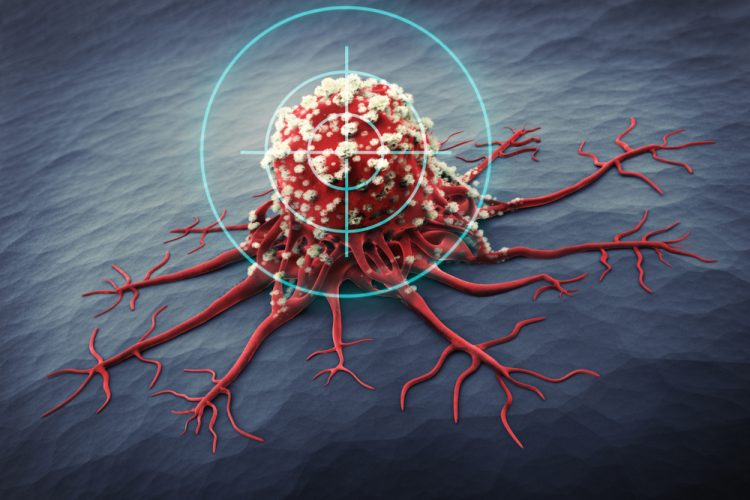NOX5: a novel target for sensitising melanoma to therapies
Posted: 19 February 2021 | Hannah Balfour (Drug Target Review) | No comments yet
Vito Quaranta, professor of biochemistry and pharmacology, discusses how cancerous cells adopting novel mechanisms of energy production could be sensitised to existing therapies with a focus on melanoma.


In this Q&A, Vito Quaranta, professor of biochemistry and pharmacology at Vanderbilt University, US, answers questions about his latest research findings surrounding how melanoma becomes resistant to treatment and suggests what can be done to overcome it.
What is melanoma and why is it important?
Melanoma is commonly called skin cancer, but it does not originate in the skin. It begins in melanocytes, the cells which produce melatonin in response to ultra-violet (UV) light, that inhabit or colonise the skin, which is composed of keratinocytes. Melanocytes are not interspersed as single cells throughout the skin; instead, they form aggregates called naevi. When these cells are perturbed, resulting in DNA damage, they grow in an unconstrained manner.
Importantly, melanocytes are naturally very invasive and therefore so is melanoma. While skin cancers originating in the keratinocytes are typically not very harmful, those that start from melanocytes are extremely dangerous. They can spread in a number of ways, including by expanding the naevus or by invading deeper levels of tissue, and can metastacise to various organs, such as the brain and bones.
In America approximately 40,000 cases of melanoma are diagnosed each year, yet Australia has the highest melanoma incidence rate: 33.6 per 100,000 people in 2018 – and cases are continuing to rise. Melanoma is also significant because it affects a lot of young people in their ’20s and ’30s.
How is melanoma treated?
Until about 10 years ago, melanoma was effectively a death sentence, being one of the most malignant and deadly cancers.
In the ’90s and early 2000s, when genetics studies took off, it was discovered that about half of melanomas had a mutation in a gene called BRAF. BRAF is part of this signalling network that responds to growth signals, particularly epidermal growth factor (EGF). In melanoma, BRAF mutates to become constitutively active, behaving like an oncogene and promoting downstream cell growth even in the absence of EGF signalling.


From this discovery, Plexxicon developed Vemurafenib to inhibit the growth of BRAF-mutated melanomas. Prior to this, chemotherapy had been the only available therapy, making this the first targeted, specific drug and representing a real breakthrough in the field. This initiated a new paradigm for approaching cancer treatment: identifying an oncogene, then developing a targeted drug to go after and control it. However, despite the spectacular results experienced with Vemurafenib, and other similar inhibitors, up to 30 percent of melanomas with BRAF mutations did not respond and more than half of patients who did respond relapsed.
At the same time, immunotherapies also entered the market, including antibodies like Ipilimumab and checkpoint inhibitors. Checkpoint inhibitors continue to be extremely successful therapies, with up to 20 percent of melanoma patients responding to treatment, to the point of essentially eradicating the melanoma. Therefore, immunotherapy has become the standard of care. However, for patients that do not respond, there are few other feasible options.
How do you develop new therapies for melanoma?
In our research, we are looking at cancers, including melanoma, as a system. Cancers may develop from a single mutation that initiates the malignancy but, as a system, the cells respond to insults from drugs and use many different mechanisms to adapt and survive.
Melanomas are successful at evading many forms of treatment given the robustness of melanocytes in the face of perturbations such as UV light. This highly adaptive quality enables them to not only perform their normal functions but, in the case of melanoma cells, it also contributes to resistance to treatments. For example, blocking the activity of BRAF might slow the growth for a while, but the cells will adopt new strategies until they can once again successfully proliferate in an unconstrained manner.
Consequently, we began to measure the effectiveness of drugs in a different way. Instead of measuring how many cells may have been destroyed by a particular drug, as is typical with clinical trials; we measure the residual rate of production as our metric of anti-cancer drug response. In our studies we grow melanoma cells in vitro, measure the growth rate – for instance, a culture may double in size within 48 hours – then we add the drug and measure the residual growth rate. A drug is successful if it significantly reduces the growth rate; in this example, maybe the culture now doubles every four weeks, instead of every 48 hours. We call this the drug-induced remission rate.
Once we identified that the induced remission rate could be a good metric, we took the melanoma cell lines we had in the laboratory and started to reclassify them based on their response to BRAF inhibitors. We then accessed more cell lines from other laboratories and did the same again. What we noticed is that the way that we were ranking them for degrees of malignancy was very different from standard approaches; unique, in fact.
How did you identify NOX5 was implicated in drug tolerance?
Once we had reclassified the cell lines, we then used transcriptomic analyses to identify which genes were expressed in the cell lines and how these affected the cells’ ability to respond to treatments. Using various technological advances – informatics, machine learning and artificial intelligence – to screen the data in high throughput, we found that there were some trends, even if not statistically significant, between cells that would and would not respond to ipilimumab.
the tolerant cells are using the NADPH as their source of energy and primarily the NOX5 (NADPH oxidase 5) enzyme to catalyse its production”
One of the primary differences between the genes expressed by tolerant (treatment-resistant) cells versus sensitive cells, was an over expression in a cluster of genes involved with metabolism. This was logical given that cells must be able to generate sufficient energy, or ATP, to enable them to produce biomass to grow quickly. Metabolism is a classic network in that, if there is not enough glucose, cells will use lipids as their source of nuclear energy; if the fat runs out, then they use protein and amino acids, and so on.
It became clear that melanoma cells are not only addicted to the BRAF mutation, but also glucose, because it is easy to metabolise. When there is not sufficient glucose to sustain the cells, they turn to alternative sources. We found the most tolerant cells expressed enzymes that allowed them to use other energy pathways.
In our studies we discovered that the tolerant cells are using the NADPH as their source of energy and primarily the NOX5 (NADPH oxidase 5) enzyme to catalyse its production from Nicotinamide adenine dinucleotide phosphate (NADP). However, using this pathway to produce energy comes at a cost to cells, as it also generates a type of reactive oxygen species called superoxide radicals. To detoxify themselves, cells produce glutathione – an antioxidant that can neutralise reactive oxygen species.
How could this lead to novel, more effective treatments?
There are two potential ways to combat drug tolerance in melanoma: by knocking out NOX5 or cysteine transport. Cysteine transport is necessary for the production of glutathione, so removing it would be cytotoxic to cells using the NADP/NADPH pathway as their primary source of energy.
Knocking out NOX5 would prevent cells from using the NADP/NADPH pathway and several companies are already working on NOX inhibitors for a range of other indications, including neurodegenerative diseases like stroke or retinopathy. It may be possible to repurpose or redevelop some of these to target NOX5 as a potential cancer therapy.
Combining both strategies – NOX and cysteine transport inhibition – could also be a highly effective option.
Is this a mechanism that is likely to be conserved across different cancers?
It is perhaps unlikely that these precise molecules – ie, NOX5, the glutathione antioxidant and type of reactive oxygen species – will be conserved across various cancers, because different cells react and change in different ways. However, the general idea that to escape a shortage of glucose another pathway will be adopted, is likely to be translated.
What excites you about working in cancer drug discovery now?
In the last 10 years or so the floodgates have opened and the adoption of inter-disciplinary research has entered. In my laboratory I have students with physics backgrounds, Masters’ in mathematics, as well as biological sciences students. Previously, these groups did not talk to one another because of their differences, but now we are learning to communicate and work collaboratively. It excites me that I am going to be part of universities that facilitate these young, computational biologists who will continue to extend research using technology.
Related topics
Artificial Intelligence, Disease Research, Drug Targets, Enzymes, Genomics, In Vitro, Metabolomics, Oncology
Related conditions
Melanoma, Skin cancer
Related organisations
Vanderbilt University
Related people
Vito Quaranta








